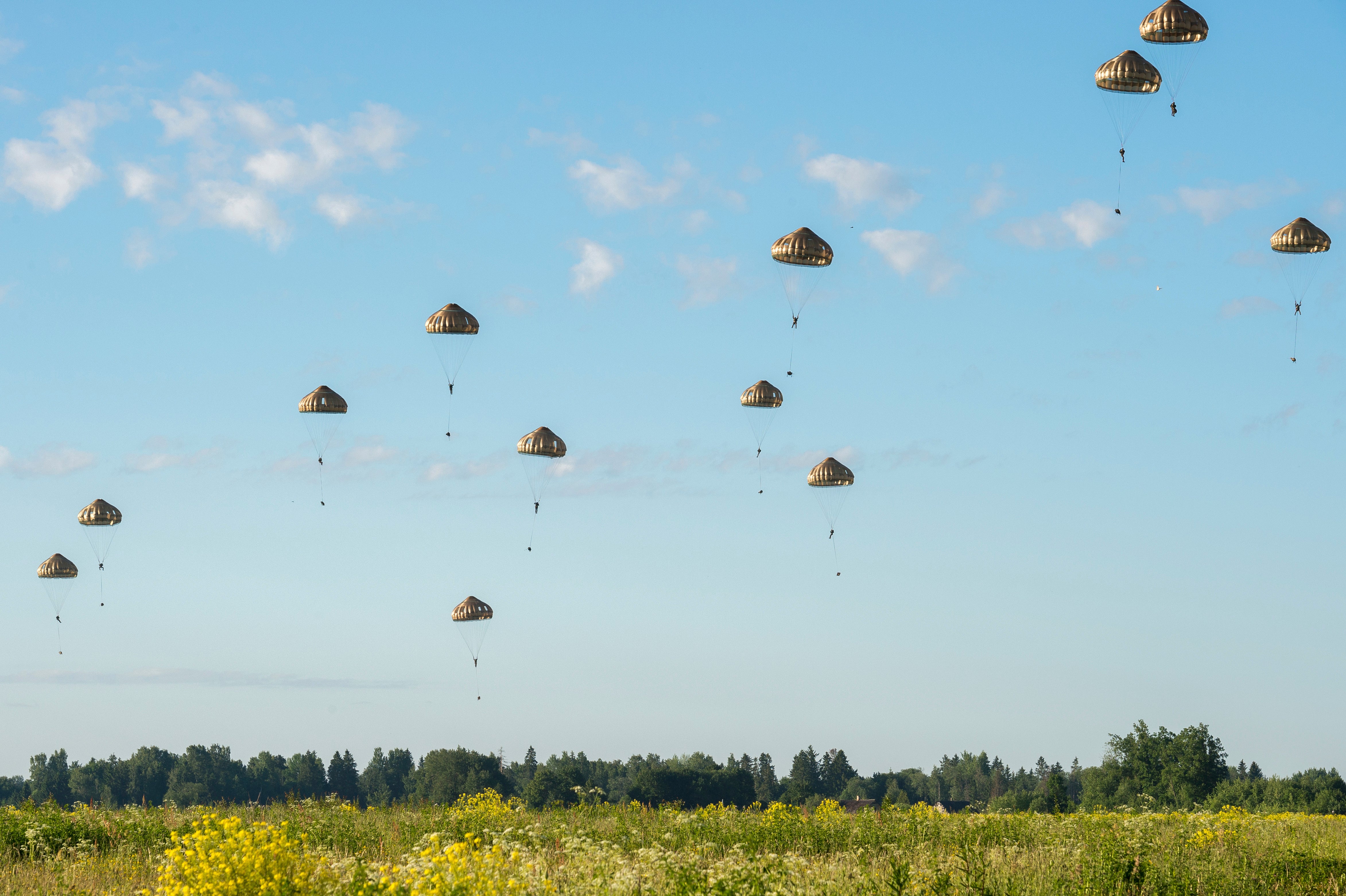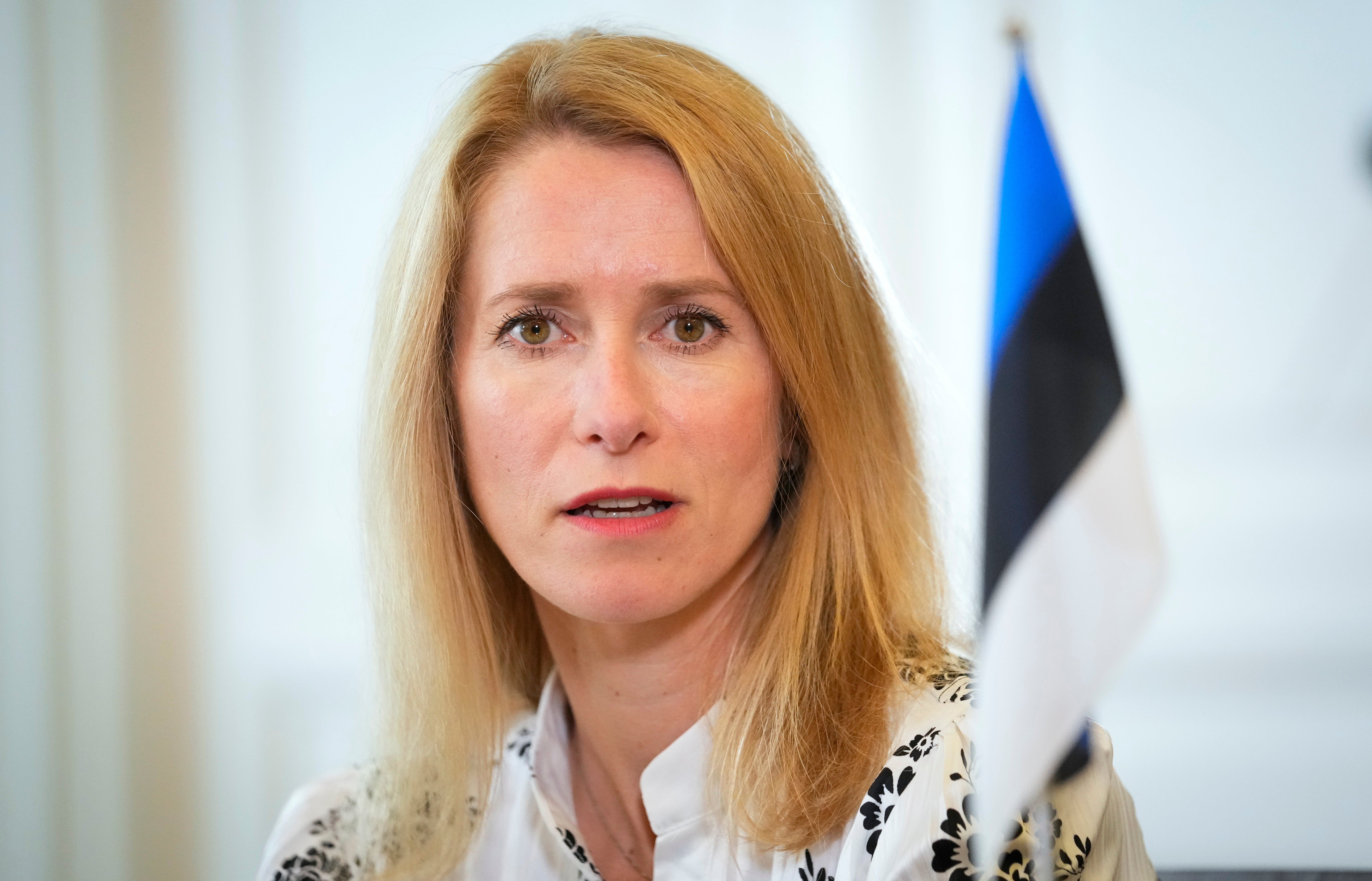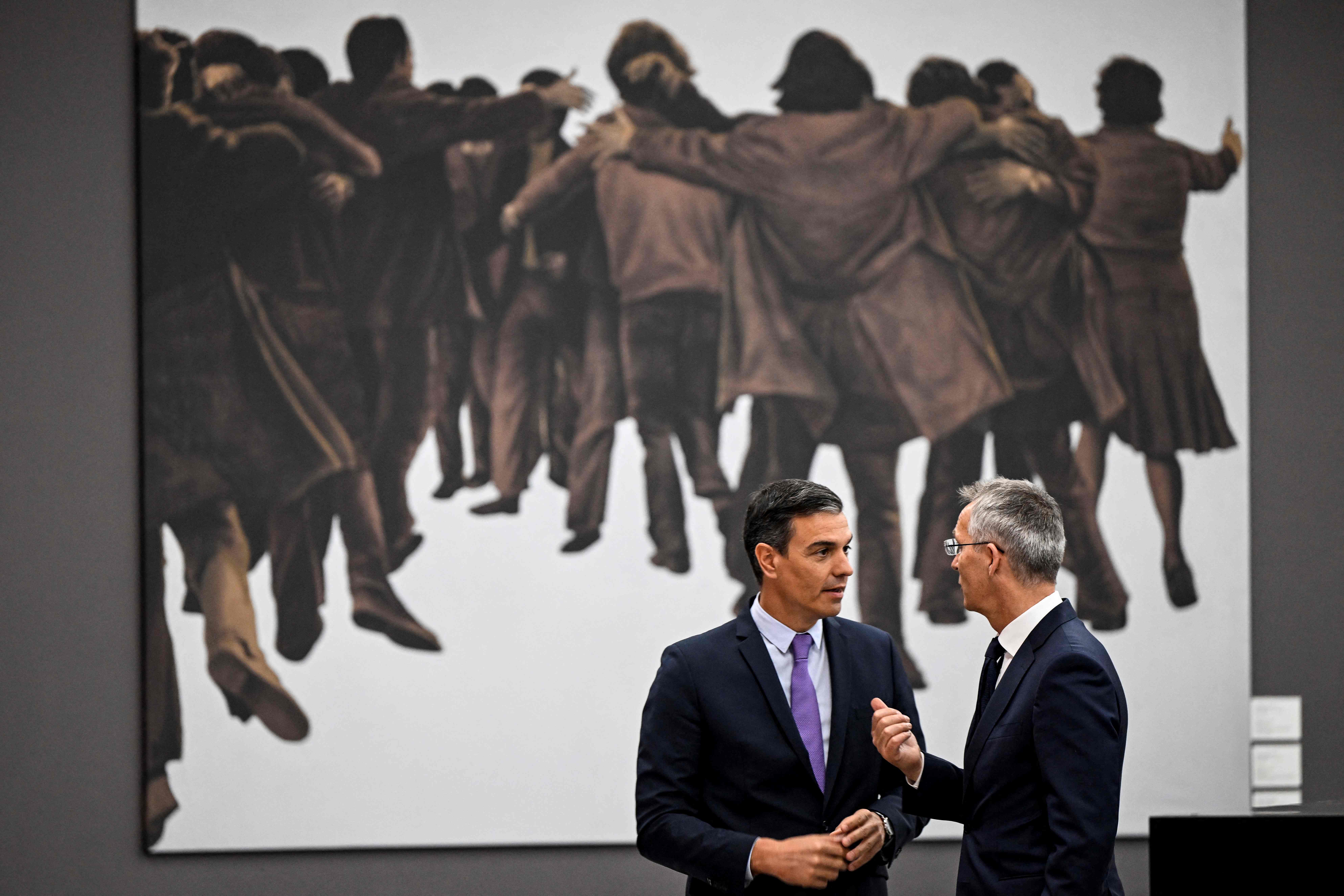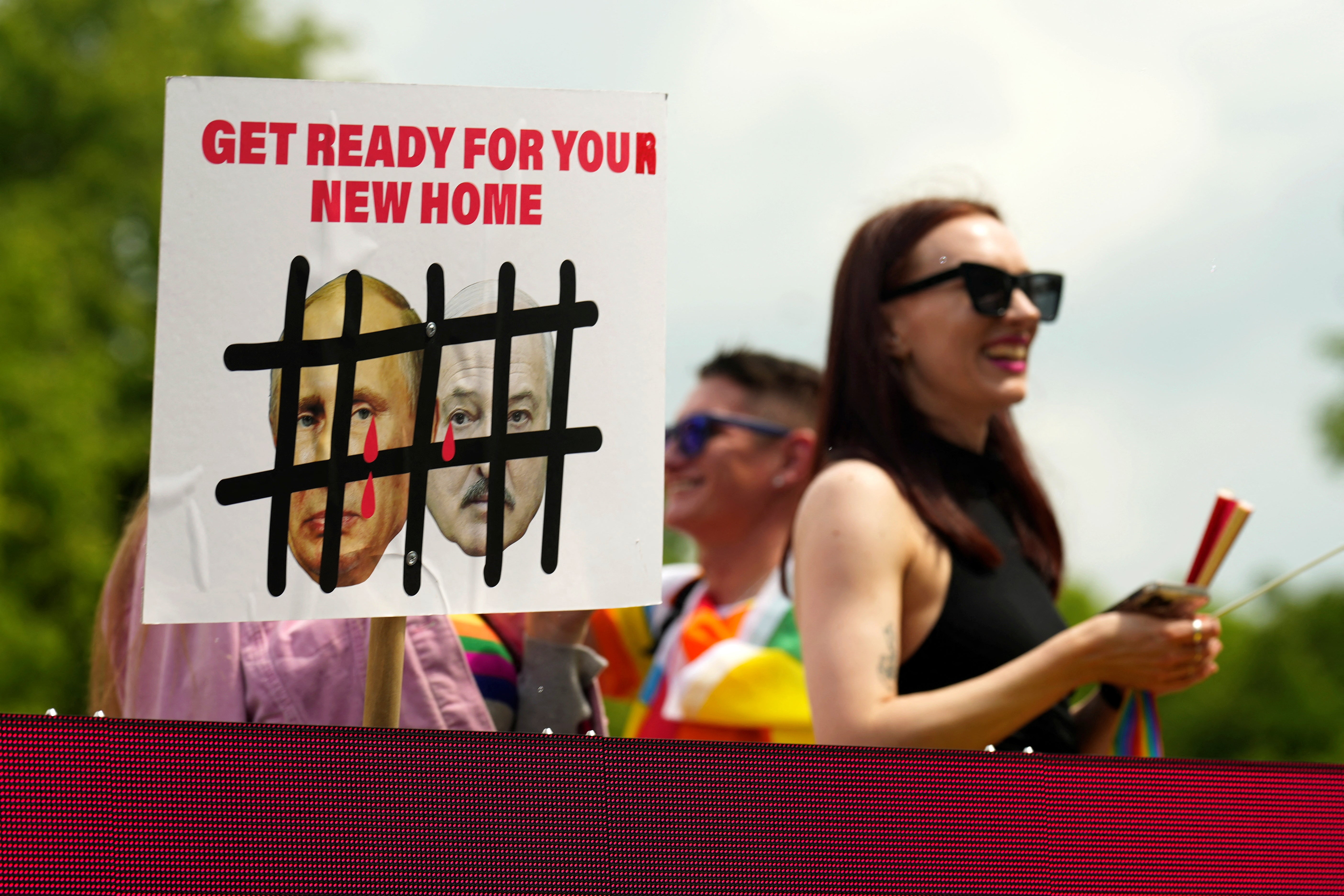We could be next: Fearful Baltic states urge Nato for more troops ahead of Madrid summit
‘We see Russia’s war in Ukraine as an existential threat to all of us not just Ukraine,’ a senior figure in Estonia tells Bel Trew


On the eve of the Nato summit, Baltic states are urging the military alliance to increase the number of troops earmarked to defend their corner of Europe against Russia to as many as 25,000 after secretary-general Jens Stoltenberg promised the “biggest overhaul of its collective deterrence and defence since the Cold War”.
Top of the agenda is Moscow’s invasion of Ukraine which has sparked a geopolitical shift, even prompting once neutral countries Finland and Sweden to apply to join Nato.
Among the most rattled are Estonia, Latvia and Lithuania, countries which have repeatedly and separately urged Nato to upgrade its presence in the Baltic region, warning they could be next to be invaded,
This week, Estonia’s prime minister told reporters the country could “be wiped off the map” under the current Nato strategy.
The former Soviet state wants to move beyond the current Enhanced Forward Presence (EFP) structure, a so-called “tripwire” strategy that positions temporary rotating troops in the country to deter a Russian attack.
Under plans The Independent understands will be discussed at the summit, countries like Estonia will urge Nato to significantly boost the number of troops in the Baltics but also those on standby in countries further west. It is hoped this could mean as many as 25,000 troops.

“We need a new, more robust posture that will significantly strengthen the deterrence and defence of the eastern flank,” said Kyllike Sillaste-Elling, director general of the Department for Nato and Transatlantic Relations at Estonia’s foreign ministry.
“In our case that includes establishing a division level structure in the country with full understanding that the forces will not necessarily be physically in place but will be earmarked for deployment to Estonia. That would need rigorous training and proper structure,” she added.
Speaking to The Independent she said they would also need to work on transit time for troops to be able to reach their shores as the world had to acknowledge “that we are in a new much more dangerous reality”.
“We see Russia’s war in Ukraine as an existential threat to all of us, not just Ukraine, not just Estonia but to Europe, to our values, to European security architecture,” she added.
“As we saw in February, Putin is not deterred. We should look at what Putin has been saying in his strategic aims including mentioning the former Soviet Union.”
“As a direct neighbour we can’t just overlook those statements. We are small, we are located far northeast next to Russia. We don’t have anywhere to retreat to, we have nowhere to go. That is why we need to have as much in place as possible.”
Ukrainian defence ministry officials have also said the country’s need for missile defence systems and for its army to be “transformed fully to Nato western standards” has become more urgent.

The plea was echoed in statements made Tuesday morning by president Volodymyr Zelensky who said he spoke to Mr Stoltenberg by phone and “stressed the importance of a powerful missile defence system for Ukraine to prevent Russian terrorist attacks”.
It came after two Russian missiles on Monday struck a packed shopping centre in the central city of Kremenchuk, hundreds of miles from the frontline, killing at least 18 people and wounding nearly 60 more according to regional authorities. As many as 40 people are still believed missing.
Speaking to The Independent shortly after the attack, Yuriy Sak, adviser to Ukraine’s defence minister, said that Ukraine was “already acting as Europe’s shield” and so needed to receive more support faster.
“The number one objective is that the Ukrainian Armed Forces be transformed fully to Nato western standards,” he said.
“It needs to be fully re-equipped with Nato-standard heavy weaponry, artillery, missile defence systems, anti-rocket systems, coastal defence systems like Harpoons which we have already received.
“We need [M270] multiple launch rocket systems which will change the dynamics of this artillery duel at the moment [in the east] where we are outgunned by the aggressor.”
Mr Stoltenberg has already said members are set to adopt a “strengthened comprehensive assistance package” to Ukraine, including deliveries of secure communication and anti-drone systems and fuel.
We are small, we are located far north east next to Russia. We don’t have anywhere to retreat to, we have nowhere to go.
He also pledged to boost combat units on the alliance’s eastern flank to brigade level and to increase the number of high-readiness forces to 300,000 strong, an eightfold rise.
He said Nato’s new strategic concept will be announced that “will make clear that Allies consider Russia as the most significant and direct threat to our security” and that will address for the first time the security challenges posed by China.
“We will recommit to the fight against terrorism, address the food crisis caused by Russia’s invasion of Ukraine, and consider our response to Russia and China’s increasing influence in our southern neighbourhood,” he added.
Mr Sak said that “considering the intensity of the missile strikes and the artillery fire” in Ukraine their needs remain unchanged but are urgent.
“We need air defence systems as fast as possible,” he added. “We hope [the summit] will overall bring us closer to receiving what we need to win this war.”
Elizabeth Braw, Resident Fellow at the American Enterprise Institute (AEI), said that Nato leaders faced a tough challenge in how they can form a response without becoming dragged into the conflict itself.
“They will try to think creatively about what Nato can do which will require some very skilled mental gymnastics,” she continued.
“The strengthening of the EFP with more troops and equipment earmarked at home for EFP duties doesn’t violate any international treaties and it strengthens deterrence.”

She said another concern for the Ukrainian government is lagging interest from the west as soaring cost of living, a global food crisis and other domestic issues become increasingly pressing.
“Ukraine is not on the front pages anymore which is worrying the Ukrainian leadership, that is why they are trying to keep the world’s attention,” she added.
“They hope to see commitment from Nato, from individual states to Ukraine even as public interest declines.”
Join our commenting forum
Join thought-provoking conversations, follow other Independent readers and see their replies
Comments
Bookmark popover
Removed from bookmarks